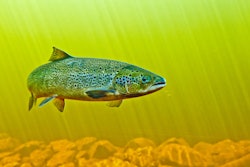
In September 2023, Animine (France) organized its fifth academy focusing on minerals, in Lyon, France. What I like about these academy events is that they are not the usual company product-focused conferences that abound worldwide. Instead, they strive to offer value that enhances the work of those attending by increasing their knowledge and awareness of issues they often consider as given.
Such was the subject of one presentation that drew my attention as it discussed a very sensitive matter: that of no longer ignoring naturally occurring trace minerals in feedstuffs. Below is a brief description of this presentation.
In the world of animal nutrition, understanding mineral requirements is of paramount importance to ensure the health and productivity of livestock. Bill Weiss, professor emeritus at The Ohio State University, delivered a comprehensive presentation. It covered various aspects of mineral requirements, from macro-minerals to trace minerals, and highlighted the differences between requirements and adequate intake.
Macro-minerals and trace minerals
The presentation began by distinguishing between macro-minerals and trace minerals, both of which are essential for the well-being of all animals. Macro-minerals include calcium (Ca), phosphorus (P), magnesium (Mg), sodium (Na), chloride (Cl), sulfur (S), and potassium (K).
Trace minerals encompass copper (Cu), iron (Fe), zinc (Zn), manganese (Mn), iodine (I), cobalt (Co), selenium (Se), and others including chromium (Cr), molybdenum (Mo), and vanadium (V). Not all are added in animal feeds, and only a few coming from natural ingredients are taken into consideration during feed formulation.
Requirements vs. adequate intake
It was also stressed that there is a remarkable difference between NASEM (National Academies of Sciences, Engineering and Medicine, known as the NRC) requirements (minimums) and what nutritionists call adequate intake.
NASEM requirements are based on presumably accurate equations, aiming to meet the needs of 50% of the population. However, adequate intake is used when there is insufficient data to quantify requirements confidently, and it relies on clinical observations and dose-response trials that maximize performance and/or profitability.
Lamentably, for practical formulation purposes, many professionals use requirements instead of adequate intake levels. It was also reminded that NASEM requirements are based on total dietary concentrations, and not restricted to supplementation levels.
Relative availability
Relative availability values were first introduced as a critical aspect of determining mineral requirements. These values are derived by comparing the response to a reference mineral with the response to a test mineral.
However, it was emphasized that these values are diet- and situation-specific and that everything in this context was relative. Also, the limitations of relative availability of data cannot be overcome.
It was noted that differences in apparent availability may not necessarily equate to differences in bioavailability. The example of selenite versus selenium-yeast was provided, demonstrating variations in absorption, colostrum/milk selenium content, and other factors, indicating the complexity of mineral bioavailability.
Supplemental sources
A discussion on supplementation sources followed. Among trace minerals, there are strong differences in metabolism between negatively charged elements (anions Se, I) and positively charged minerals (cations Zn, Cu, Mn, Fe). It was also highlighted that there are no general conclusions to be applied due to the large heterogeneity of products in the market. Sulfates, oxides, chlorides, chelates can be produced from different manufacturing processes.
While some organic trace minerals may be more absorbable than inorganic ones, the opposite can also be true. In the end, clinical and production responses tend to be more consistent than status indicators, and each product should be evaluated on its own merit and not on its label alone.
Native minerals in feedstuffs
The importance of including all minerals coming from feedstuffs when formulating diets was emphasized. The notion that minerals in forages have low availability and should be entered as zero in formulation programs was debunked as another oversimplification. Macro-minerals in feeds were found to have equal or higher availability than most supplements, while trace minerals’ availability varied depending on soil contamination and other factors.
For example, it was noted that soil contamination can affect the apparent availability of trace minerals in forages. Therefore, adjustments may be needed in formulations, or mean (table values) concentrations should be used. High ash content in feeds could indicate soil contamination, resulting in low mineral availability. An ash test remains inexpensive.
Safety factors for minerals
The need for safety factors when formulating diets with minerals was discussed next. Safety factors are usually necessary due to variations in mineral requirements, diet concentrations, and covariance with dry matter intake. However, for some minerals, such as P, S, I and Se, accurate estimates of requirements and low diet concentration variation may eliminate the need for a safety factor.
There are also antagonistic relationships between certain trace minerals, such as Cu, Mn, Zn and Se. It was noted that most software does not account for these relationships, and users may need to adjust mineral concentrations or formulate to a higher requirement to compensate. Here is a gap for feed formulation software developers.
Mineral source and fiber digestibility
Something not known to many is that the mineral level and source can affect fiber digestibility and rumen fermentation. This is of paramount importance in ruminants for obvious reasons. There is still a lack of evidence on the fate of supplemental sources in the rumen environment. What do we know about the dissociation of compounds at neutral pH? Do we prefer non-water-soluble sources so that they remain protected from interactions? Or do we prefer them to be absorbed by rumen bacteria? This remains a largely unexplored field of research.
Key takeaways
The presentation concluded with several key takeaways for formulating diets with minerals. These included the inclusion of native minerals in formulations, using analyzed more than mean values as much as possible, adjusting for soil contamination in forages, considering mineral source differences, and accounting for non-requirement effects.
Additionally, it was recommended to adjust mineral supplementation for potential dietary antagonists and to be mindful of the source of trace minerals. It appears mineral nutrition is more complex than just adding a mineral premix into any complete feed, at least not until such a premix has been designed and manufactured by a knowledgeable professional.












